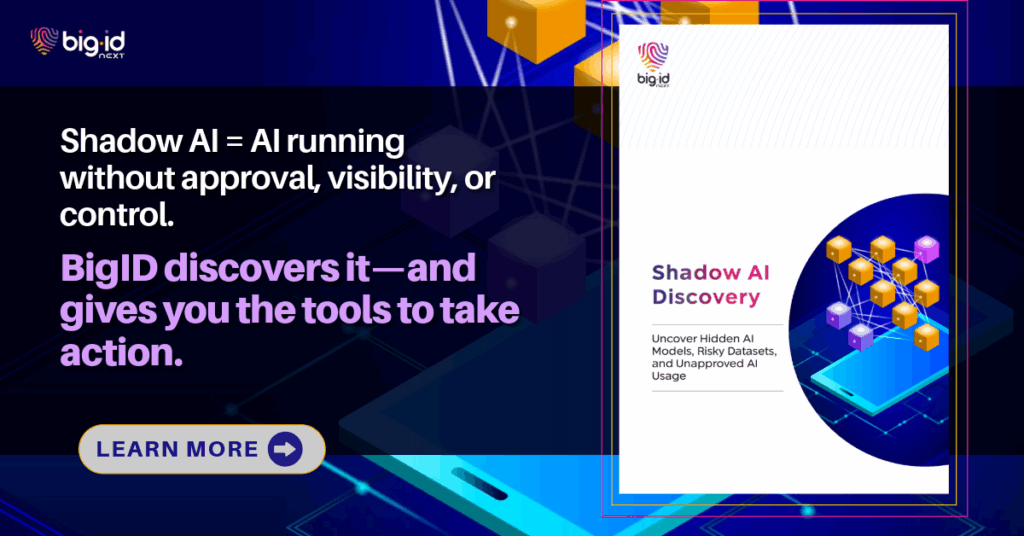What Is AEGIS? The New Standard for Securing Agentic AI
AEGIS — Agentic AI Guardrails for Information Security — is a forward-looking framework developed to secure autonomous AI systems as they gain independence across enterprise environments.
Unlike traditional generative AI, agentic AI doesn’t just respond — it reasons, decides, and acts. These systems can chain tasks, invoke tools, retrieve sensitive data, and trigger downstream workflows without ongoing human oversight. That autonomy creates new attack surfaces, governance gaps, and data exposure risks.
AEGIS was designed to close those gaps. It’s not a product or platform — it’s a security framework that embeds policy, controls, oversight, and enforcement throughout the agent lifecycle. AEGIS gives CISOs, CIOs, and security architects a structured approach to keeping autonomous systems secure, compliant, and aligned with business intent.
Why Agentic AI Guardrails Matter
- Agentic AI scales fast — and so do its risks. One misstep can propagate across systems and data pipelines.
- Security boundaries are dissolving. Agents can access apps, data, and networks far beyond traditional perimeters.
- Accountability is non-negotiable. AEGIS enforces traceability, auditability, and policy adherence from the ground up.
With AEGIS, organizations move from reactive controls to proactive guardrails — preventing drift, enforcing governance, and preserving trust in autonomous systems.
What Is Agentic AI — and Why Guardrails Matter
Agentic AI refers to autonomous systems that can plan, act, monitor, and adapt toward goals with minimal human intervention. Unlike classic generative AI, which simply generates responses, agentic systems orchestrate multi-step workflows, invoke APIs, and make contextual decisions.
But with that power comes risk. A single misaligned or compromised agent can access sensitive data, invoke privileged APIs, or drift from business intent.
That’s why guardrails matter: layered policies, runtime checks, and oversight mechanisms that keep agents aligned, auditable, and secure.
In 2025, Forrester introduced AEGIS — Agentic AI Guardrails for Information Security — a six-domain framework to help CISOs and security teams manage agentic AI safely and at scale.
Below, we’ll unpack the AEGIS framework, map it to core enterprise security domains (Zero Trust, IAM, Threat Management, and more), and show how BigID builds guardrails proactively — helping organizations secure agentic AI from the data up.
The AEGIS Framework: Six Domains of Guardrails
According to Forrester, AEGIS defines six domains essential for governing AI systems:
- Governance, Risk & Compliance (GRC)
- Identity & Access Management (IAM)
- Data Security & Privacy
- Application Security
- Threat Management
- Zero Trust Architecture
Each serves as a lens for designing guardrails that keep agentic AI safe, compliant, and trustworthy. Here’s how each domain applies — and how BigID helps operationalize them.
1. Governance, Risk & Compliance (GRC) Scope
- Define acceptable use, prohibited actions, and escalation paths.
- Ensure auditability, traceability, and accountability.
- Conduct ongoing risk assessments and manage control exceptions.
- Maintain alignment with privacy laws and sector regulations.
Guardrail Design
- Policy as Code: Express permissions, constraints, and rules directly in code — versioned, testable, auditable.
- Comprehensive Logging: Record every decision, tool call, and data path.
- Drift Detection: Monitor agent behavior for goal or authorization drift.
- Human-in-the-Loop Controls: Require approval for sensitive actions.
BigID in Action
BigID’s AI Governance Platform builds guardrails from training through deployment, integrating AI TRiSM and AI SPM to orchestrate policy, trace lineage, and enforce controls.
Example: An agent trained to redact PII can use BigID’s discovery and classification capabilities to ensure compliance with privacy laws — automatically blocking high-risk fields, recording every redaction, and flagging anomalies like sudden access to new datasets.
2. Identity & Access Management (IAM)
Why It Matters
Agents are nonhuman identities acting across systems. They need the same controls as users — least privilege, credential lifecycle, and access traceability.
Guardrails
- Unique, non-shared agent identities.
- Role-based access aligned to purpose.
- Just-in-time privileges with audit.
- Secrets vaulting and credential rotation.
- Delegation boundaries between agents.
BigID Advantage
BigID enables identity-aware guardrails: every AI request is tied to user entitlements. Data filtering and prompt-level access controls prevent unauthorized exposure before the model ever sees sensitive content.
3. Data Security & Privacy
The Challenge
Agents constantly handle, generate, and move data — often sensitive or regulated. Without guardrails, exposure risks multiply.
Guardrail Layers
- Discovery & Classification: Identify sensitive data automatically.
- Flow Controls: Restrict export or external movement.
- Masking & Redaction: Protect data in transit and transformation.
- Context-Aware Filtering: Limit retrieval to authorized contexts.
- Differential Privacy & Anonymization: Preserve privacy in aggregates.
BigID’s Edge
BigID continuously discovers and classifies sensitive data within prompts and responses, enforcing redaction and access controls dynamically.
During RAG or vector retrievals, BigID uses sensitivity metadata and entitlements to surface only what’s allowed — creating a “data guardrail layer” between agent and information.
4. Application Security
The Risk Surface
Agents invoke APIs, run code, and orchestrate workflows — all potential entry points for attack or misuse.
Guardrails
- Sandboxing and isolation environments.
- Input/output sanitization.
- API mediation through secure gateways.
- Runtime policy enforcement checks.
- Static analysis and red teaming before deployment.
BigID’s Role
The BigID AI Security Platform (AISP) helps protect against prompt injection, model abuse, and vector-store risk.
By integrating with application and infrastructure layers, BigID mediates agentic tool calls, embeds runtime checks, and flags suspicious behavior — such as an agent attempting to call APIs outside its scope.
5. Threat Management
Why It’s Critical
Agentic AI expands the attack surface — from prompt injection to multi-agent collusion.
Guardrails
- Continuous adversarial testing and red teaming.
- Behavioral anomaly monitoring.
- Runtime containment and rollback.
- Cross-agent risk correlation.
- Immediate kill-switch mechanisms.
BigID’s Approach
BigID conducts continuous AI security testing, measuring exposure metrics and threat indicators in real time.
The result: a “security guardrail belt” that surrounds agentic operations — constantly evaluating emergent behavior and automatically intervening when risk thresholds are breached.
6. Zero Trust Architecture
Principle
Zero Trust means no implicit trust — every identity, component, and request must be continuously verified and restricted to the least privilege.
Guardrails
- Least privilege by default.
- Micro-segmentation across systems and agents.
- Continuous verification of every action.
- Conditional and just-in-time access.
- Network segmentation to prevent lateral movement.
AEGIS Alignment
Zero Trust underpins multiple AEGIS domains — especially IAM, application, and data security. In agentic AI, all access to APIs or data should flow through Zero Trust enforcement layers such as policy gateways or conditional access controls.
BigID operationalizes the AEGIS framework through a unified AI Governance and Security Platform that:
- Bridges GRC, IAM, and Data Security with AI TRiSM and SPM capabilities.
- Embeds runtime and Zero Trust controls for agentic systems.
- Delivers continuous monitoring, compliance alignment, and adaptive policy enforcement.
In short: BigID makes AEGIS actionable — transforming AI governance from theory into automated, measurable guardrails.
The Big Picture: Benefits of Security Guardrails in Agentic Systems
- Safety at scale: As agent counts rise, manual reviews become impossible. Guardrails scale safety.
- Trust and adoption: Stakeholders (security, legal, risk) gain confidence in deploying autonomous systems.
- Regulatory alignment: Guardrails help meet privacy, audit, and compliance obligations.
- Resilience & recovery: With containment, rollback, and monitoring, systems can recover from rogue agent behavior.
- Innovation under control: Teams can iterate quickly while staying within safe boundaries.
In short: Guardrails don’t kill autonomy — they steer it safely.
Putting AEGIS to Work: Real-World Impact with BigID
Use Case 1: Automated Data Discovery & Privacy Enforcement
An agentic assistant continuously scans new databases or file systems to classify sensitive data (PII, PHI, financial). Without guardrails, it might overstep or expose data. With guardrails: it only retrieves metadata, not full content; any data movement must be authorized; logs every action; flags anomalies.
BigID implementation: BigID’s agentic copilots help data stewards prioritize risks, automate classification, and offer policy recommendations. These agents operate within boundaries enforced by BigID’s governance platform
Use Case 2: Prompt-Level Redaction & Safe Chatbot Interfaces
An internal chatbot (agent) interacts with sensitive data (employee info, contracts). Guardrails ensure that prompts or responses never leak SSNs, PII, credit card info, or regulated attributes.
BigID’s solution: BigID actively scans prompts and responses, applying dynamic redaction and access controls so only allowed content surfaces.
Use Case 3: Automated Remediation or Compliance Fixes
An agent reviews access logs, identifies policy violations, and remediates (e.g. revoking access, rotating keys). With proper guardrails, it only remediates authorized domains, logs each change, and escalates critical actions for approvals.
BigID scenario: BigID’s agentic functions help security programs escalate priority issues, recommend fixes, and guide stewards — all inside guardrail constraints.
Use Case 4: Safe Multi-Agent Orchestration
Multiple agents collaborate (e.g. one agent fetches data, another enriches it, another triggers downstream systems). Each agent’s rights must be scoped, and passing control must be regulated to avoid privilege escalation.
With guardrails, inter-agent delegation is controlled; unauthorized handoffs are blocked; all actions are audited.
Putting It All Together: A Secure Agentic AI Stack
Securing agentic AI isn’t a single solution—it’s a layered strategy. Think of it as an intelligent stack where every layer works in concert to protect, govern, and control how autonomous systems operate.
Here’s how the AEGIS stack comes together:
- Governance & Policy Layer (AEGIS GRC): Define and enforce policies as code. Keep version control, audits, and escalation paths at your fingertips.
- IAM & Identity Layer: Assign unique identities to every agent. Control access with precision through roles, entitlements, and just-in-time permissions.
- Zero Trust Enforcement Layer: Never assume trust. Apply conditional access, segment networks, and continuously validate agent behavior.
- Data Access & Filtering Layer: Classify data automatically, redact sensitive values in real time, and apply context-aware access rules.
- Application & Tool Interface Layer: Channel all agent interactions through secure gateways. Enforce runtime policies, sanitize inputs, and sandbox risky actions.
- Threat Detection & Runtime Monitoring: Detect anomalies before they escalate. Deploy kill switches, run red teams, and adapt to emergent risks.
- Human Oversight Path: Build in exception handling. Route flagged behaviors to humans for real-time review and intervention.
BigID powers this entire stack—governing data from discovery to decision, filtering access in real time, mediating how agents act, and surfacing risks before they become threats.
This isn’t a theory. It’s how you stay secure, stay compliant, and stay in control of AI that doesn’t just answer—but acts.
Guardrails aren’t constraints. They’re confidence.
And with BigID, you can scale agentic AI safely—on your terms.
See how it works in action—schedule a 1:1 demo with our team today.



